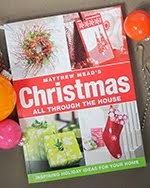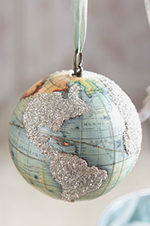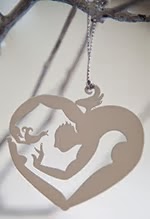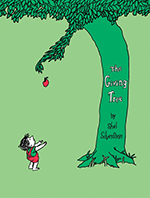TRICK-OR-TREAT is the well-known mantra of ghouls and goblins that show up on your doorstep on Halloween night. The sometimes hostile supernatural forces and the ghosts and spirits of the dead are supposedly free to wander as they wish, as they walk on the thin line separating them on this scary night. Over the course of centuries, the present-day custom of trick-or-treating was born out of such superstition. Is it only that, or did our ancestors know something we've forgotten?
GIVING TREATS to the tricksters, according to Halloween lore is said to appease the wandering spirits and keep them from doing dastardly deeds to your property (or flock, as it were). Wearing masks and other disguises are meant to confuse the spirits roaming amongst us.
AS A KID, I remember roaming around the neighborhood with a gaggle of friends, going unsupervised to neighbors homes (after a certain age) where we would find homemade fudge, popcorn balls and other treats carefully packaged in paper treat bags printed in black and orange. Of course the trickster tradition of papering (or rolling) someone's yard was great fun also (usually friends or teachers)! The freedom of these innocent times has been curtailed these days with more supervision since the trickster spirits seemed to have taken hold of the holiday. Maybe it's only because—more often than not—the treats aren't as carefully considered and made with love.
AND SINCE cats are my favorite animal associated with Halloween (actually my favorite animal, period), I've created a simple cat tree this year. It seems that Halloween is rivaling Christmas in popularity everywhere. It's no mystery that according to History.com that one quarter of all the candy sold annually in the U.S. is purchased for Halloween. Let's hope that's enough to keep us safe from the evil trickster spirits for at least another year.
GOTHIC GLAM | (Top) This glittery tree stands in contrast to the blue backdrop painted with Martha Stewart Living paint in azurite from Home Depot. It is decorated with glittered vintage-inspired ornaments from Stromboli's Wagon and Jack-O-Lantern metal bell ornaments in three sizes from Pier 1 Imports. Altogether they form a vintage Halloween look. Since the bells ring, does that mean the spirits get their wings?
HALLOWEEN HANGERS | (Above, right) I couldn't resist these Halloween owl, moon and bat hangers designed by my blog friend Johanna Parker (left, in her Halloween finery). Oversized and double-sided painted papier-mâché ornaments of this size certainly set a spooky-fun scene for a tableau like this. I purchased these folk-art finds from blog friend Debbie Buchanan's online store at Bayberry Cove.
GOTHIC GLAM | (Top) This glittery tree stands in contrast to the blue backdrop painted with Martha Stewart Living paint in azurite from Home Depot. It is decorated with glittered vintage-inspired ornaments from Stromboli's Wagon and Jack-O-Lantern metal bell ornaments in three sizes from Pier 1 Imports. Altogether they form a vintage Halloween look. Since the bells ring, does that mean the spirits get their wings?
GLITTERY RETRO | (Above, left) The handcrafted ornaments were hand-cut and crafted in New England and sold in the online Stromboli's Wagon store on Ebay. Inspired by vintage imagery and beautifully finished, it's obvious they were made with love and care.
HALLOWEEN HANGERS | (Above, right) I couldn't resist these Halloween owl, moon and bat hangers designed by my blog friend Johanna Parker (left, in her Halloween finery). Oversized and double-sided painted papier-mâché ornaments of this size certainly set a spooky-fun scene for a tableau like this. I purchased these folk-art finds from blog friend Debbie Buchanan's online store at Bayberry Cove.
CATS IN HATS | (Bottom) These black cat ornaments in orange hats from Pier 1 Imports are a simple trick for this coated wire tree from IKEA. The multi-colored bumpy glass ornaments are from a past Martha Stewart Kmart collection. The cat/costumed folk-art figures were lent from a friend's private collection, all placed atop a sparkly beaded spider placemat from this year's Halloween collection from Target.
©2010 DARRYL MOLAND | ALL RIGHTS RESERVED
photography, collecting and styling by Darryl Moland

















































